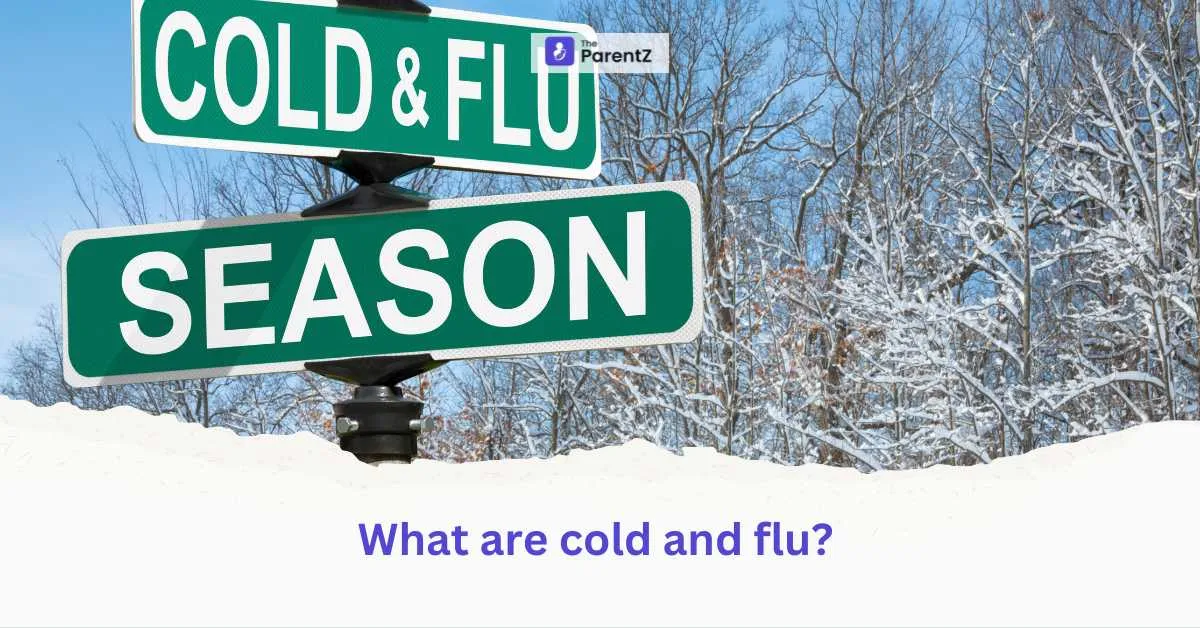As a parent, keeping your children healthy is a top priority. However, illnesses like the common cold and influenza (flu) are almost inevitable, especially during certain times of the year. Understanding these illnesses can help you take proactive steps to prevent them and manage symptoms effectively when they occur. This comprehensive guide delves into what colds and flu are, their causes, symptoms, differences, prevention strategies, and care tips tailored for parents.
What is the Common Cold?
The common cold is a mild viral infection of the upper respiratory tract, which includes the nose and throat. It's one of the most prevalent illnesses worldwide, especially among children, who can experience multiple colds each year.
Causes
- Viruses Involved: Over 200 viruses can cause the common cold, but the rhinovirus is the most common culprit.
- Transmission: Colds are highly contagious and spread through airborne droplets when an infected person coughs or sneezes. They can also spread by touching contaminated surfaces and then touching the nose or mouth.
Symptoms
- Runny or stuffy nose
- Sore throat
- Cough
- Sneezing
- Mild headache
- Low-grade fever (more common in children)
- Mild body aches
Note: Symptoms usually appear 1-3 days after exposure and can last up to 10 days.
What is the Flu (Influenza)?
Influenza, commonly known as the flu, is a contagious respiratory illness caused by influenza viruses. It can range from mild to severe and, in some cases, lead to serious health complications.
Causes
- Viruses Involved: Primarily influenza A and B viruses.
- Transmission: Similar to the common cold, the flu spreads through droplets when an infected person coughs, sneezes, or talks. It can also spread by touching contaminated surfaces.
Symptoms
- High fever (often above 101°F or 38.3°C)
- Chills and sweats
- Severe muscle or body aches
- Fatigue and weakness
- Dry, persistent cough
- Sore throat
- Headache
- Nasal congestion
- Vomiting and diarrhea (more common in children)
Note: Flu symptoms typically come on suddenly and are more intense than cold symptoms.
Why Children are More Susceptible
- Developing Immune Systems: Children's immune systems are still maturing, making them more vulnerable to infections.
- Close Contact: Schools and daycare centers facilitate close contact among children, increasing the spread of viruses.
- Hygiene Habits: Younger children may not practice good hygiene, such as handwashing, consistently.
Prevention Strategies
For the Common Cold
- Hand Hygiene: Encourage regular handwashing with soap and water for at least 20 seconds.
- Avoid Touching Face: Teach children to avoid touching their eyes, nose, and mouth.
- Disinfect Surfaces: Regularly clean commonly touched objects and surfaces.
- Healthy Lifestyle: Ensure a balanced diet, adequate sleep, and regular physical activity to strengthen the immune system.
For the Flu
- Annual Flu Vaccination: Recommended for everyone aged 6 months and older.
- Stay Informed: Be aware of flu outbreaks in your community.
- Practice Respiratory Etiquette: Cover coughs and sneezes with a tissue or elbow.
Managing Symptoms at Home
For Colds
- Rest: Ensure your child gets plenty of sleep.
- Hydration: Offer fluids like water, warm broths, or herbal teas.
- Nasal Saline Drops: Help relieve nasal congestion.
- Humidifiers: Use a cool-mist humidifier in the child's room to ease breathing.
- Over-the-Counter Remedies: Use age-appropriate medications for symptom relief after consulting a pediatrician.
For the Flu
- Antiviral Medications: Consult a doctor; antiviral drugs can be effective if started early.
- Monitor Symptoms: Keep an eye on fever and other symptoms; seek medical attention if they worsen.
- Isolation: Keep your child at home to prevent spreading the flu to others.
When to See a Doctor
Seek medical attention if your child experiences:
- Difficulty breathing or rapid breathing
- High fever that doesn't respond to medication
- Severe or persistent vomiting
- Signs of dehydration (dry mouth, no tears when crying, decreased urination)
- Chest pain
- Bluish skin color
- Extreme irritability or lethargy
Potential Complications
Common Cold
- Sinus Infections
- Middle Ear Infections
- Asthma Triggers: Colds can exacerbate asthma symptoms.
Flu
- Pneumonia
- Bronchitis
- Sinus and Ear Infections
- Worsening of Chronic Medical Conditions: Such as asthma or heart disease.
Myths and Misconceptions
- Antibiotics Cure Colds and Flu: False. Antibiotics treat bacterial infections, not viruses.
- Flu Vaccines Cause the Flu: False. Flu vaccines contain inactivated viruses that cannot cause infection.
- Going Out in Cold Weather Causes Illness: Partially false. Cold weather itself doesn't cause colds or flu, but viruses may spread more easily in colder, dry air.
Frequently Asked Questions
1. Can my child get the flu and a cold simultaneously?
Yes, it's possible for someone to be infected with both viruses at the same time, though it's relatively uncommon.
2. How long is my child contagious?
- Cold: Generally contagious for the first 2-3 days after symptoms begin.
- Flu: Can be contagious 1 day before symptoms appear and up to 5-7 days after becoming sick.
3. Should my child attend school if they have a cold or flu?
- Cold: If symptoms are mild and your child feels well enough, they may attend school, but it's best to consult with the school’s policy.
- Flu: Children with the flu should stay home until at least 24 hours after the fever subsides without the use of fever-reducing medications.
Tips for Supporting Your Child
- Comfort Measures: Provide a loving environment; cuddles and reassurance can help them feel better.
- Nutrition: Offer nutritious foods, but don't force eating if appetite is low.
- Education: Teach your child about germs and the importance of hygiene in a fun and engaging way.
- Stay Calm: Children can pick up on parental anxiety; staying calm can help them feel more secure.
Conclusion
Understanding the common cold and flu empowers you as a parent to take proactive steps in prevention, care, and when necessary, seeking medical attention. While it's challenging to avoid these illnesses entirely, especially in children, effective management can reduce discomfort and prevent complications. Always consult with healthcare professionals for guidance tailored to your child's specific needs.








Be the first one to comment on this story.